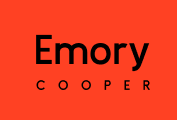The journey from the structured walls of academia to the dynamic world of professional life is both thrilling and daunting. For many students, this transition is filled with doubt, as the academic skills honed over years often seem disconnected from the realities of the workplace. This gap is where Emory Cooper’s The Student’s Guide to the Job Search becomes an invaluable resource, offering practical strategies to transform theoretical knowledge into workplace-ready skills. The key to thriving in today’s competitive job market lies in understanding how to bridge this gap effectively.
Despite years of study, many graduates find themselves unprepared for the job market. While colleges focus on imparting theoretical knowledge, the professional world demands practical skills like adaptability, communication, and problem-solving. According to Cooper, this disconnect often stems from the lack of opportunities for students to apply their academic learning in real-world scenarios. For example, consider a student with excellent analytical abilities from a STEM background. Without experience in teamwork or effective communication, their potential might remain untapped. Bridging this gap requires students to identify the transferable skills gained through academics and enhance them with practical exposure.
Cooper emphasizes the importance of identifying transferable skills—abilities that can be applied across various industries and roles. These include problem-solving, critical thinking, leadership, and the ability to work under pressure. While students might not immediately recognize these skills, they are often inherent in academic projects, group assignments, and extracurricular activities. Take, for instance, the ability to meet deadlines for multiple assignments during exam season. This skill mirrors the time management required in a fast-paced corporate environment. Similarly, participating in debates or presentations nurtures public speaking and persuasion—skills highly valued in any profession. The first step in leveraging these abilities is acknowledging their relevance. As Cooper aptly puts it, “Your academic strengths are only as valuable as your ability to articulate and apply them.”
Bridging the gap between the classroom and career begins with reframing academic achievements into professional competencies, and Emory Cooper outlines several strategies to make this connection. Group projects promote collaborative skills, including teamwork, conflict resolution, and leadership, which can be showcased in resumes and interviews. Research assignments and lab work enhance analytical thinking and problem-solving abilities, highly valued in roles requiring strategic decision-making. Similarly, writing essays and delivering presentations build strong written and verbal communication skills that, when tailored to professional contexts, significantly boost employability. These examples illustrate that the classroom is more than a hub for theoretical learning—it is a training ground for developing career-ready skills.
No matter how extensive one’s academic achievements, real-world experience is indispensable. Internships, part-time jobs, and volunteer opportunities offer students a glimpse into professional life and help bridge the gap between education and employment. Cooper emphasizes the need for students to actively seek these experiences during their college years.
Cooper dedicates an entire section of his book to the importance of networking, referring to it as “the bridge that connects potential to opportunity.” Building a professional network while still in college can open doors that are otherwise inaccessible. Students can begin by connecting with peers, professors, and alumni who are already in the workforce. Attending industry events, joining relevant LinkedIn groups, and participating in internships are excellent ways to expand their network. Informational interviews—casual conversations with professionals in a desired field—can provide invaluable knowledge and guidance. Networking is not just about asking for jobs; it’s about building relationships that add value to both parties. This proactive approach helps students stand out in a competitive job market.
One of the most compelling wisdom from Cooper’s book is the emphasis on resilience and adaptability. The job market is constantly evolving, with new industries emerging and traditional roles becoming obsolete. To thrive in such an environment, students must be willing to learn, unlearn, and relearn. For instance, technological advancements have made digital literacy a necessity in almost every profession. Students who adapt by learning new tools and technologies position themselves as valuable assets to employers. Cooper encourages students to view adaptability as a strength, citing examples of how lifelong learning can lead to sustained career growth.
Another critical aspect of transitioning from the classroom to a career is personal branding. According to Cooper, personal branding is about showcasing your unique value proposition to potential employers. This involves creating a professional LinkedIn profile, curating an online presence that reflects your aspirations, and tailoring resumes to highlight relevant skills.
The journey from classroom to career is challenging, but it is also an opportunity for immense growth. By applying the strategies outlined in The Student’s Guide to the Job Search, students can turn their academic achievements into a strong professional foundation. From recognizing transferable skills to gaining practical exposure and building a network, the steps to bridging this gap are clear. By taking a proactive approach and embracing continuous learning, students can position themselves not just as job seekers, but as confident, capable professionals ready to make an impact.
The transition from academia to the workforce is a pivotal moment, and success hinges on the ability to adapt, strategize, and apply one’s strengths. Emory Cooper’s The Student’s Guide to the Job Search offers a blueprint for handling this journey, empowering students to turn uncertainty into opportunity.

